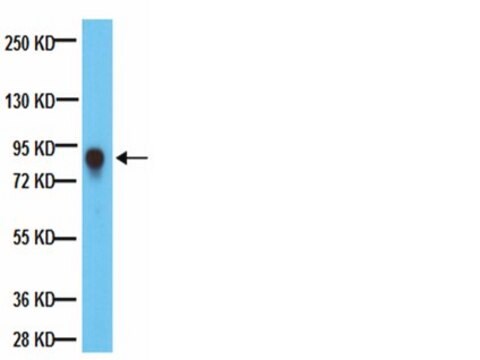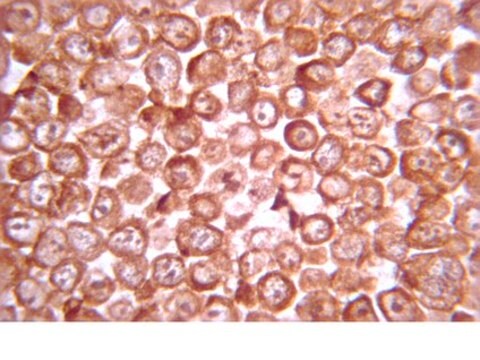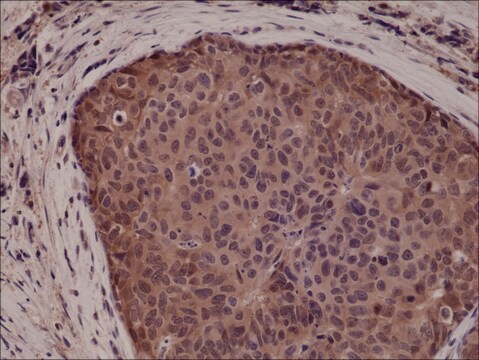04-903
Przeciwciało anty-GSK3α/β, królicze monoklonalne
culture supernatant, from rabbit
Synonim(y):
GSK-3 alfa, kinaza syntazy glikogenu 3 alfa
About This Item
Polecane produkty
pochodzenie biologiczne
rabbit
Poziom jakości
forma przeciwciała
culture supernatant
rodzaj przeciwciała
primary antibodies
klon
monoclonal
reaktywność gatunkowa
mouse, human, rat
metody
immunoprecipitation (IP): suitable
western blot: suitable
izotyp
IgG
numer dostępu NCBI
numer dostępu UniProt
Warunki transportu
dry ice
docelowa modyfikacja potranslacyjna
unmodified
informacje o genach
human ... GSK3B(2932)
Opis ogólny
Specyficzność
Immunogen
Zastosowanie
UWAGA: To przeciwciało również skutecznie immunoprecypitowało GSK3 alfa i beta przy użyciu systemu odwracalnej immunoprecypitacji Catch and Release v2.0 (nr katalogowy 17-500).
Sygnalizacja
Sygnalizacja PI3K, Akt i mTOR
Jakość
Western Blotting Analysis: A 1:1,000 dilution of this antibody detected GSK3 alpha and GSK3 beta in RIPA lysates from A431, HEK293, Jurkat, HeLa NE or 3T3/A31 cells.
Opis wartości docelowych
Powiązanie
Postać fizyczna
Przechowywanie i stabilność
Zalecenia dotyczące postępowania: Po otrzymaniu, a przed zdjęciem korka, odwirować fiolkę i delikatnie wymieszać roztwór. Rozdzielić do probówek mikrowirówkowych i przechowywać w temperaturze -20°C. Unikać powtarzających się cykli zamrażania/rozmrażania, które mogą uszkodzić IgG i wpłynąć na działanie produktu.
Komentarz do analizy
Lizat komórek HEK293
Inne uwagi
Oświadczenie o zrzeczeniu się odpowiedzialności
Nie możesz znaleźć właściwego produktu?
Wypróbuj nasz Narzędzie selektora produktów.
Kod klasy składowania
12 - Non Combustible Liquids
Klasa zagrożenia wodnego (WGK)
WGK 1
Temperatura zapłonu (°F)
Not applicable
Temperatura zapłonu (°C)
Not applicable
Certyfikaty analizy (CoA)
Poszukaj Certyfikaty analizy (CoA), wpisując numer partii/serii produktów. Numery serii i partii można znaleźć na etykiecie produktu po słowach „seria” lub „partia”.
Masz już ten produkt?
Dokumenty związane z niedawno zakupionymi produktami zostały zamieszczone w Bibliotece dokumentów.
Nasz zespół naukowców ma doświadczenie we wszystkich obszarach badań, w tym w naukach przyrodniczych, materiałoznawstwie, syntezie chemicznej, chromatografii, analityce i wielu innych dziedzinach.
Skontaktuj się z zespołem ds. pomocy technicznej








